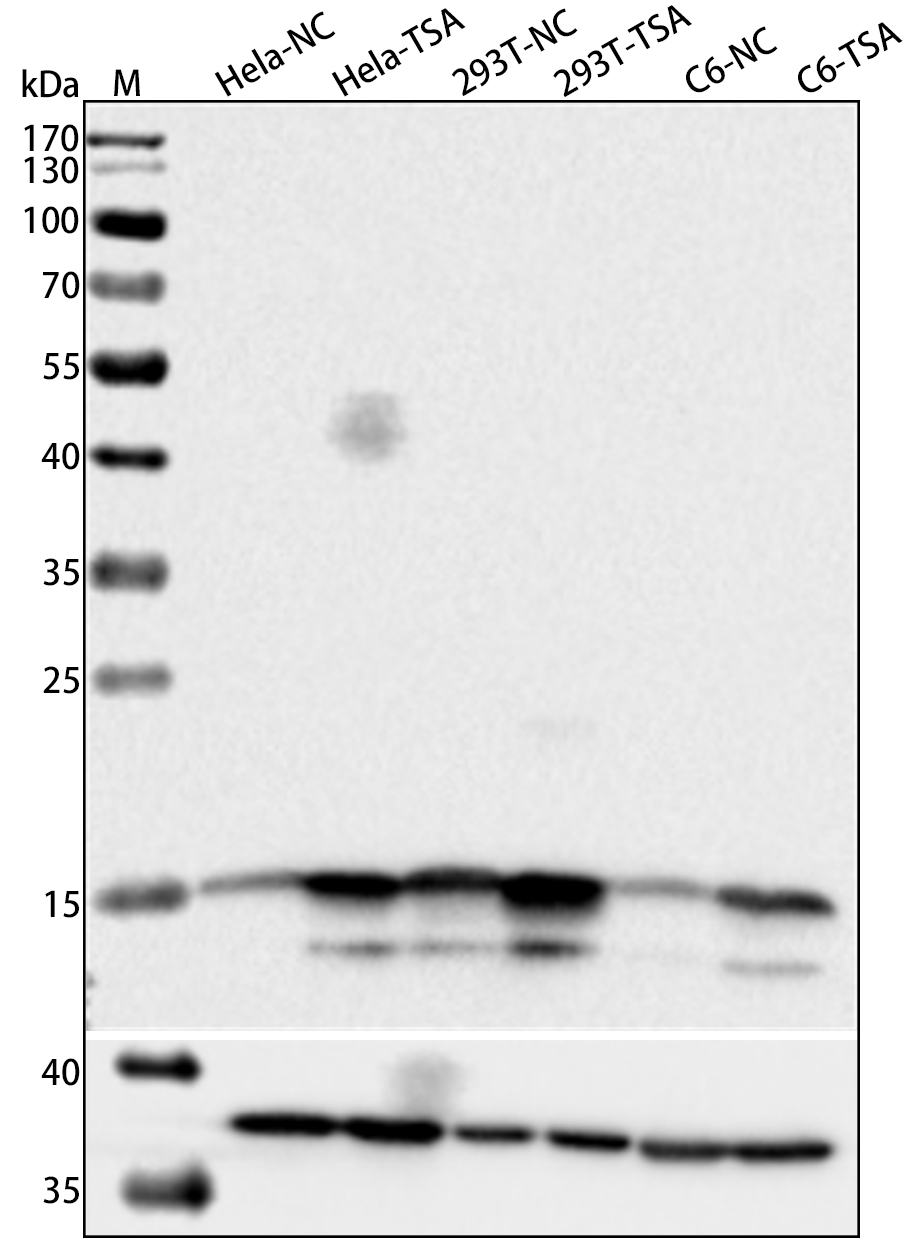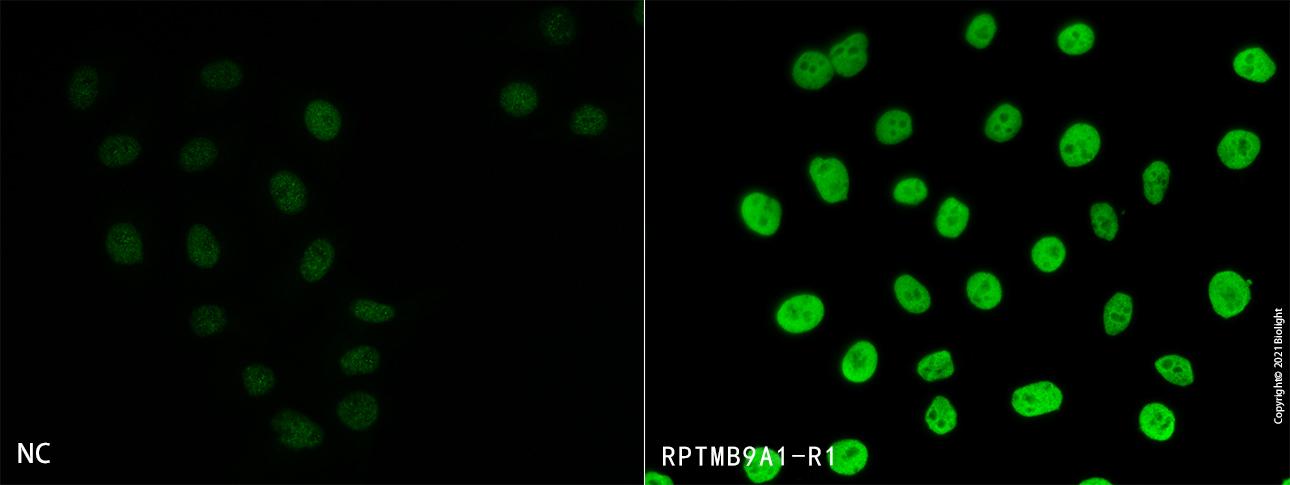
Anti-Acetyl-Histone H3 (Lys36) Antibody, Recombinant Antibody, R1
产品编号:RPTMB9A1-R1
¥ 询价
规格 100ug
浓度 1.3mg/ml
 |
说明书 |
产品名称:Anti-Acetyl-Histone H3 (Lys36) Antibody, Recombinant Antibody, R1
克隆号:R1
抗体亚型:Rabbit IgG
经验证的应用:WB/IHC/ICC/CHlP
交叉反应:Human, Mouse, Rat
特异性:Acetyl-Histone H3 (Lys36) (D9T5Q) Rabbit mAb can recognize endogenous levels of histone H3 protein only when it is acetylated at Lys36.
免疫原:Synthetic peptide
宿主:CHOS/293F
来源:Recombinant Rabbit IgG
纯化:Protein A purified
缓冲液:Supplied in PBS, 50% glycerol and less than 0.02% sodium azide, PH7.4
状态:Liquid
应用:The application notes include recommended starting dilutions; optimal dilutions/concentrations should be determined by the end user. WB: 0.5~5ug/ml ICC:5~20ug/m IHC: 5~20ug/ml ChIP:2-20ug/5×106cells
使用&储存条件:Shipped at 4℃.Store at 4℃ for frequent use.Aliquot and store at -20℃ for 12 months.Avoid repeated freezing/thawing and violent shaking.Please centrifuge it, before using.
质量验证图:
Figure1.Western blot analysis of HeLa, 293T and C6 cells, untreated or treated with the TSA(1uM, 18h), using RPTMB9A1-R1 at 2ug/ml dilution. Secondary antibody: HRP Goat Anti-Rabbit IgG (H+L) at 1:10000 dilution. Blocking buffer: 5% nonfat dry milk in TBST. Detection: ECL Basic Kit . Loading control to GAPDH (CP00002HuA10)
Figure2.Immunofluorescent analysis of Hela cells, untreated (left) or treated with TSA(1uM, 18h), using RPTMB9A1-R1 (green) at 10ug/ml dilution. Nuclear DNA was labelled in blue with DAPI (blue).
别称:/
背景信息:The nucleosome, made up of four core histone proteins (H2A, H2B, H3, and H4), is the primary building block of chromatin. Originally thought to function as a static scaffold for DNA packaging, histones have now been shown to be dynamic proteins, undergoing multiple types of posttranslational modifications, including acetylation, phosphorylation, methylation, and ubiquitination. Histone methylation is a major determinant for the formation of active and inactive regions of the genome and is crucial for the proper programming of the genome during development. Arginine methylation of histones H3 (Arg2, 17, 26) and H4 (Arg3) promotes transcriptional activation and is mediated by a family of protein arginine methyltransferases (PRMTs), including the co-activators PRMT1 and CARM1 (PRMT4). In contrast, a more diverse set of histone lysine methyltransferases has been identified, all but one of which contain a conserved catalytic SET domain originally identified in the Drosophila Su(var)3-9, Enhancer of zeste, and Trithorax proteins. Lysine methylation occurs primarily on histones H3 (Lys4, 9, 27, 36, 79) and H4 (Lys20) and has been implicated in both transcriptional activation and silencing . Methylation of these lysine residues coordinates the recruitment of chromatin modifying enzymes containing methyl-lysine binding modules such as chromodomains (HP1, PRC1), PHD fingers (BPTF, ING2), tudor domains (53BP1), and WD-40 domains (WDR5). The discovery of histone demethylases such as PADI4, LSD1, JMJD1, JMJD2, and JHDM1 has shown that methylation is a reversible epigenetic marker.
全称:/


